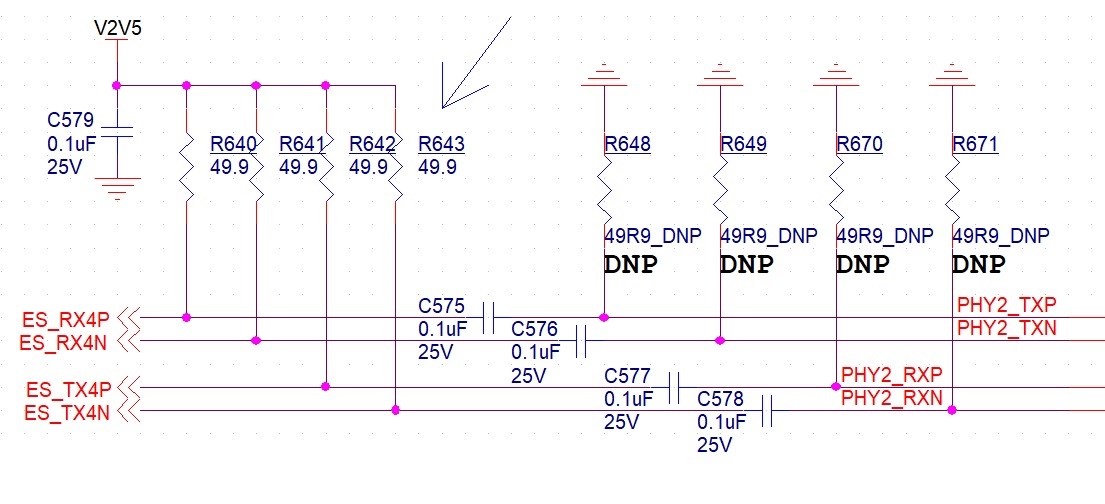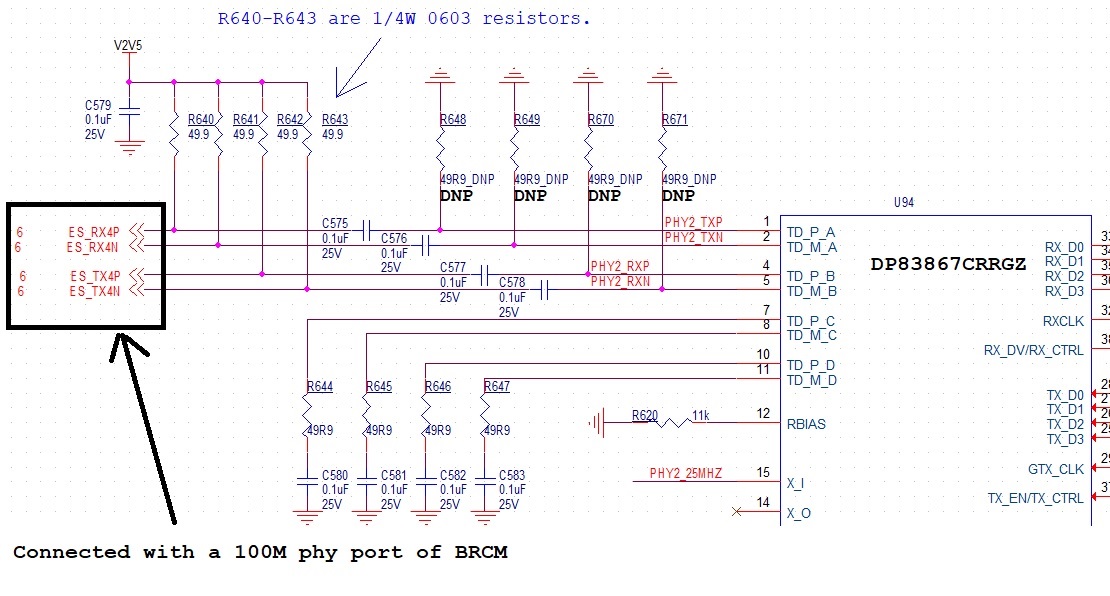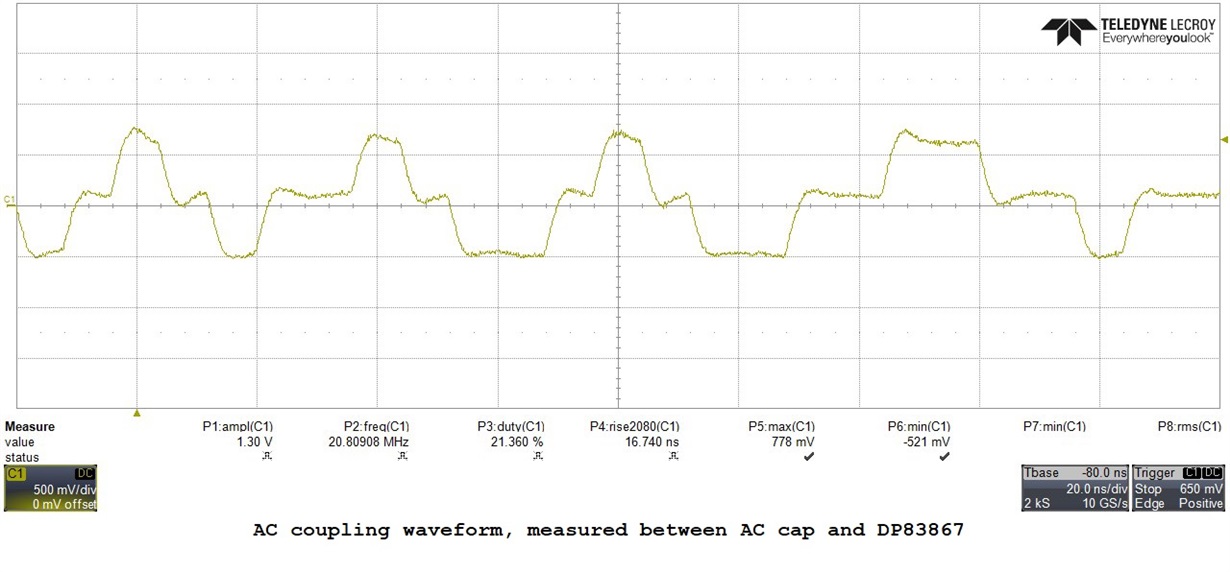Hi experts,
I have a design using DP83867CRRGZ, while I have to connect it with another PHY directly, meanwhile the area in my board is very limited, so I have to use AC coupling mode to connect them together.
For DP83867CRRGZ, when I connected it with transformer, the center tap pin will be connect with GND by a 0.1uF, as for the other PHY, when connected with transformer, its center tap must be 2.5V, meanwhile it's 100M Ethernet, so I only use two pairs of signals.
What's the key for connecting two PHY connected, is it the common voltage? as the signal will be compatible with IEEE spec, is that right?
Back to TI PHY signals, current there is no pull-up/down for them, can this be feasible? Is there anything I missed?
Thanks
Chris




